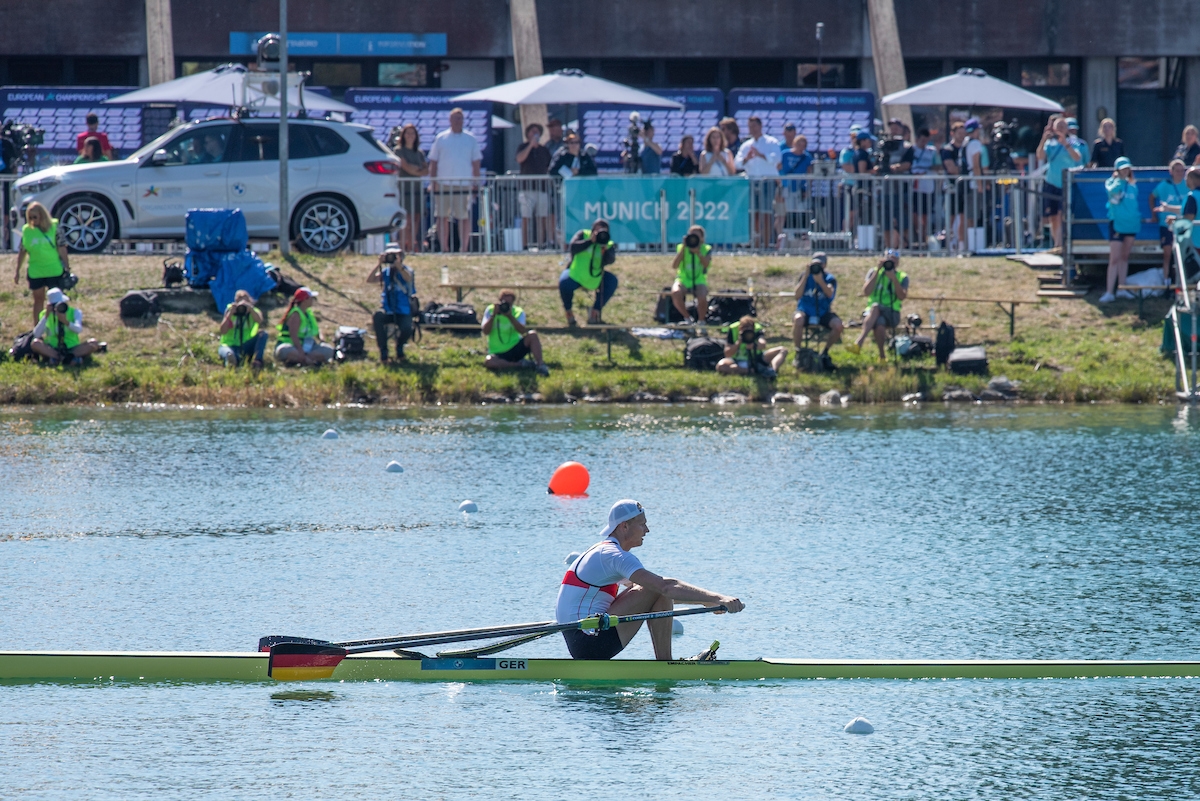BY VOLKER NOLTE
PHOTO BY PETER SPURRIER
To continue reading…
This article is exclusively for Rowing News subscribers. For as little as $5 a month, you can get access to the best quality, independent reporting on all the issues that matter to the North American rowing community.
Already a subscriber? Login
The ideal is to identify faulty movement patterns in rowers to protect them from injury—whether they’re rowing to enjoy the outdoors with friends or training to compete in the Olympics. One of the most important ways to prevent injury is good posture.
Many are confused about what constitutes good posture in rowing. A persistent canard is the belief that an anterior tilt of the pelvis with lumbar extension shows proper positioning of the back going into the catch and during the first part of the drive, followed by a “straight back” during the rest of the stroke.
This technique reflects the orthodox rowing style one sees in rowing books from the early 1900s with their silhouettes demonstrating proper position and movement. Similar are the movement screens used by some rowing associations to identify faulty movement patterns in young rowers. Such tools award high ratings when the back looks like a broomstick and low ratings the more the back is bent.
In the 1930s, Steve Fairbairn, the influential Cambridge University rowing coach, proposed a more natural rowing style that became the basis for subsequent technique. It is defined by a neutral spine that reflects individual curvature and is neither broomstick-straight nor curved excessively
A vivid example: the ’59 Olympic rowers pictured in the September 2021 issue of Rowing News. No doubt, these top rowers logged thousands of miles preparing for their Olympic berth and, together with their coaches and support staff, developed a technique that suited them while they tried to minimize injury. None of these rowers shows a broomstick-like straight back. Instead, they display many variations of a curved back.
Good posture is achieved through a neutral spine stabilized by a strong core. Some claim that a round back leads automatically to injury. This is not true. In rowing, an anterior tilt of the pelvis with lumbar extension does not protect the back. On the contrary, it causes a lot of stress. The comparison with weightlifting is misleading since the direction of external forces while performing the two sports is quite different.
Not all the rowers in that bygone Olympic photo display back posture that is optimal, but the flexion of their backs reveals a spine position that is close to neutral, and one can be certain that along the way they developed strong core muscles not only to buttress their backs but also to be able to compete at such an elite level.

